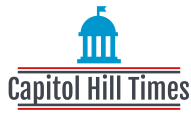Greg Bishop (The Center Square).
According to the National Bureau of Economic Research, Illinois was the sixth-worst state for positive outcomes due to policies that were implemented in response the the COVID-19 pandemic.
It Study reviews all 50 states and the District of Columbia on three variables: health outcomes, economic performance throughout the pandemic, and impact on education from during the past two years of COVID-19 policies.
Casey Mulligan from the University of Chicago, an economist, said the lesson for policymakers is that closing schools wasn’t helpful.
RELATED : Hospitals make $120 billion while skirting federal transparency law
“It hurt the children and it didn’t help health,” Mulligan told The Center Square. “Might even hurt the health a little bit, but it definitely didn’t improve health, didn’t reduce COVID or anything like that. That’d be No. 1, No. 2 is cutting down on economic activity didn’t improve health that much.”
Illinois is an outlier “among their geographic neighbors in the direction of low combined scores,” the report shows.
Illinois came in near the bottom among 51 jurisdictions. 46 overall.
“We kind of gave each state a grade and Illinois got an F,” Mulligan said.
Support Conservative Voices!
Register to Receive the LatestYour inbox receives political news and insight.
For economic indicators, Illinois ranked No. 47. This included the economy average, unemployment and gross domestic product. For in-person education, Illinois ranked No. 43. Illinois ranks No.1 in health outcomes like COVID mortality per 100,000 or all-cause death and mortality rates. 20.
Study found no evidence that economies locked down had better health outcomes.
“Excluding the geographically unusual cases of Hawaii and Alaska to focus on the continental U.S., there is no apparent relationship between reduced economic activity during the pandemic and our composite mortality measure,” the report says.
While the study found school closures did have a moderate correlation with the research’s mortality measure, the literature did not show there was causality. There was a correlation between closed schools and states that had locked-down economies.
“Unsurprisingly, there was a strong relationship between the states that had poor economic performance and closed schools – the lockdown states,” the report says.
Illinois Gov. J.B. Pritzker’s stay-at-home order in March 2020 lasted ten weeks. At that time, Illinois’ unemployment rate skyrocketed and many businesses failed to reopen. Pritzker received varying levels of mandates over the following months, such as capacity limits. Pritzker’s indoor mask mandate was in effect for more than a year until he finally lifted it. In August 2021, his indoor mask mandate was reimplemented. It had been lifted in March 2022.
RELATED: What Are The Effects Of America’s Narcissism Epidemic?
Separately, the Illinois Department of Public Health Tuesday said it’s adopting the U.S. Centers for Disease Control and Prevention’s recommendation to only focus on COVID-19 hospitalizations and cases per 100,000.
Amaal Tokars, IDPH Acting Director, stated that this means data on the website are changing.
“This includes more data on vaccination rates and more detailed data on people who are hospitalized including their vaccination status,” Tokars said during a media briefing on the changes.
Tokars indicated that even though cases are rising, Illinois still falls under the low transmission category.
“We have not discussed mitigation at this time, so if we do discuss it, that’s a determination yet to be made,” Tokars said.
Pritzker has recently said that if the COVID metrics warrant more mitigation, he will take the necessary action, though didn’t elaborate.
This article was syndicated by permission of The Center Square.

